Lucknow travel - India, Asia
Lucknow, the capital of Uttar Pradesh, is located on the banks of the Gomti River and is renowned for its rich history and cultural heritage. Approximately 500 kilometers east of New Delhi, Known as the "City of Nawabs," it features stunning landmarks such as the Bara Imambara and the Rumi Darwaza, showcasing its Mughal architecture and historical significance during the 1857 uprising. Lucknow is renowned for its unique blend of history, culture, and architecture. The city is famous for its Awadhi cuisine, which includes dishes like kebabs and biryanis, and for its traditional crafts such as chikankari (a form of embroidery).
Population: Estimate 4,000,000 people (as of 2024)
Economy: Lucknow, has a diverse economy that plays a crucial role in its appeal to travelers. The city is a significant hub for agriculture, particularly known for its production of mangoes, melons, and various grains. Additionally, industries such as food processing, manufacturing, and handicrafts thrive here, with Chikan embroidery being a notable craft that attracts both locals and tourists alike.
Landmarks: Bara Imambara, Chhota Imambara, Rumi Darwaza, Qaisar Bagh Palace Complex, Charbagh Railway Station, Rumi Darwaza, Qaisar Bagh Palace Complex, Charbagh Railway Station
India
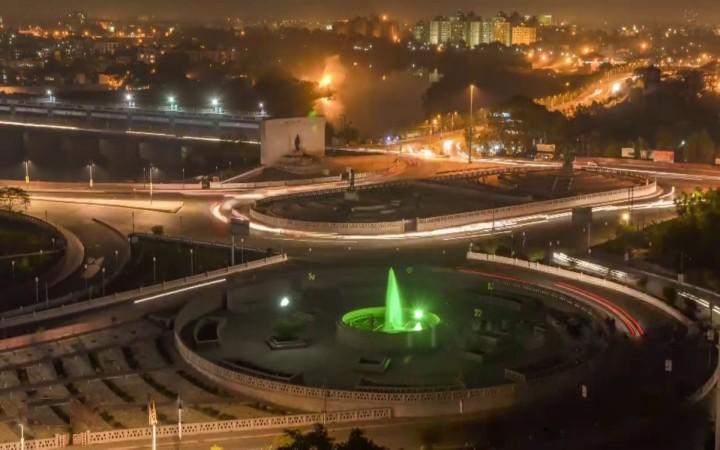
Overview of Lucknow
History & Cultural Influence
Lucknow's history is deeply intertwined with its cultural evolution, particularly during the Nawabi era when it became the capital of the Awadh region in the 18th and 19th centuries. The Nawabs, particularly Nawab Asaf-ud-Daula, were instrumental in transforming Lucknow into a center of art, poetry, and architecture, commissioning grand structures like the Bara Imambara and Rumi Darwaza, which reflect a blend of Mughal and Persian styles.
The city gained historical significance during the Indian Rebellion of 1857, notably through the Siege of Lucknow, marking it as a pivotal location in the struggle for independence from British rule. This event not only shaped its political landscape but also left a lasting impact on its architecture and urban planning, introducing Western influences alongside its traditional heritage.
Lucknow is celebrated for its unique cultural ethos known as Ganga-Jamuni Tehzeeb, symbolizing the harmonious coexistence of Hindu and Muslim traditions, which is evident in its festivals, cuisine, and social customs.
Interaction with The Locals
When visit Lucknow, you can expect a warm and welcoming interaction with locals, who are known for their hospitality and friendliness. The city has a diverse population, predominantly comprising Hindus (around 71.71%) and Muslims (approximately 26.36%), reflecting a rich cultural tapestry that influences social interactions.
The people of Lucknow take pride in their heritage and are eager to share their city's history, traditions, and culinary delights, often engaging tourists in conversations about local customs and attractions. The general attitude towards tourists is positive, with locals being helpful in guiding them to popular sites and recommending authentic dining experiences, such as the famous kebabs and biryanis that the city is known for.
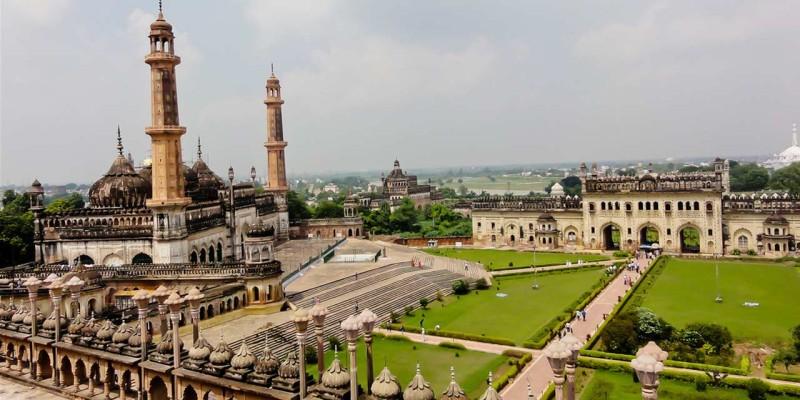
Bara Imambara - © lucknowtourism
Top attractions in Lucknow
Lucknow, captivates travelers with its rich cultural heritage and architectural splendor. From the grand Bara Imambara, an architectural marvel with its labyrinthine passages, to the stunning Rumi Darwaza, a 60-foot-high gateway that is a symbol of Lucknow's royal past. Visitors are also drawn to the bustling streets of Hazratganj, offering a perfect blend of traditional markets and modern cafes.
Bara Imambara
Location: Near Machchhi Bhavan, Machchhi Bhavan, Lucknow, Uttar Pradesh
Bara Imambara, also known as Asafi Imambara, is a monumental structure built in 1784 by Nawab Asaf-ud-Daula. Famous for its architectural brilliance, it features the largest arched hall in the world without any supporting beams. Visitors are drawn to its central hall, the intriguing Bhul Bhulaiya (a maze), and the elegant Asfi Mosque, making it a must-see historical site.
Chota Imambara
Location: 447, Hussainabad, Lucknow, Uttar Pradesh
Constructed in 1838 by Nawab Muhammad Ali Shah, Chota Imambara is a stunning mausoleum that houses the tombs of the Nawab and his mother. Adorned with intricate decorations and beautiful calligraphy, this monument reflects the rich artistic heritage of Lucknow.
Rumi Darwaza
Location: 17/11 Hussainabad Road, Lajpat Nagar Colony, Lajpat Nagar, Machchhi Bhavan, Lucknow, Uttar Pradesh
Rumi Darwaza, also known as the Turkish Gate, is a 60-foot-tall gateway built in 1784, symbolizing the grandeur of Awadhi architecture. Its distinctive design, complete with an octagonal chhatri (umbrella) at the top, stands as an iconic emblem of Lucknow’s cultural legacy.
Hazratganj Market
Location: Hazratganj, Lucknow, Uttar Pradesh
Hazratganj is a lively shopping district that has been a popular spot since the British era. Blending traditional charm with modern amenities, it offers a variety of shops, cafes, and restaurants, making it a perfect place for shopping, dining, and socializing.
Janeshwar Mishra Park
Location: Gomti Nagar, Lucknow, Uttar Pradesh
Janeshwar Mishra Park is one of the largest green spaces in Lucknow, providing a tranquil retreat with walking trails, cycling paths, and peaceful surroundings. It’s an ideal destination for families and nature enthusiasts looking to unwind amidst nature.
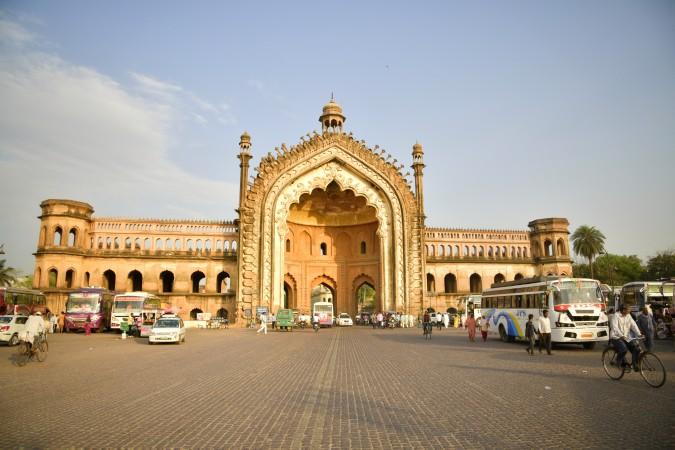
Rumi Darwaza - © Rishabhgpt
Must-Try Dishes in Lucknow
Lucknow is a food lover's paradise, renowned for its rich and flavorful Awadhi cuisine. Must-try dishes include the legendary Tunday Kababi, known for its melt-in-your-mouth texture, and Galouti Kebabs, a delicacy crafted with finely minced meat and aromatic spices. Don't miss out on Lucknawi Biryani, a fragrant and savory rice dish that perfectly embodies the essence of the city's culinary heritage.
Galouti Kebab
Galouti Kebabs are a delicacy from the royal kitchens of Lucknow, featuring finely minced meat seasoned with a blend of aromatic spices. These kebabs are famous for their melt-in-the-mouth texture and are typically served with mint chutney and onion rings, making them a must-try for meat lovers.
Awadhi Biryani
Awadhi Biryani is a fragrant and flavorful rice dish made with marinated meat, basmati rice, and a mix of aromatic spices. Cooked using the traditional "dum" method, this dish reflects the rich culinary heritage of Lucknow and is often enjoyed during festive occasions.
Tunday Kababi
Tunday Kababi is a signature dish of Lucknow, known for its tender minced meat mixed with a variety of spices and herbs. Named after its creator, Haji Murad Ali, these kebabs are a local favorite and are usually paired with rumali roti and a tangy chutney.
Korma
Lucknowi Korma is a rich, creamy meat curry made with yogurt, nuts, and aromatic spices. This dish, which emphasizes slow cooking and the use of high-quality ingredients, is a staple in Lucknow’s cuisine and is often served with naan or rice.
Makhan Malai
Makhan Malai is a light, frothy milk dessert that is a winter specialty in Lucknow. Flavored with saffron and cardamom and garnished with nuts, this traditional treat is a delightful way to end a meal and highlights the city’s sweet culinary tradition.
Kashmiri Chai
Kashmiri Chai, also known as Noon Chai, is a unique pink-colored tea made with green tea leaves, milk, and a hint of salt. Often garnished with crushed nuts, this creamy beverage is a popular choice among locals and reflects the cultural influences present in Lucknow.
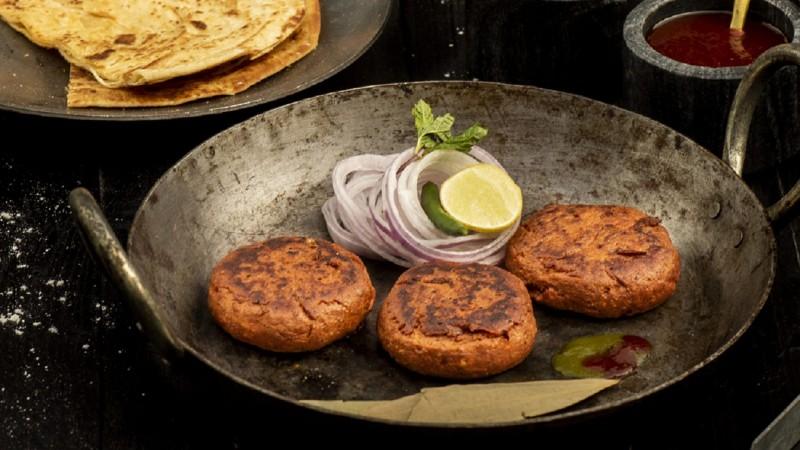
Galouti Kebab - © gather
Festivals & Local Celebrations
Lucknow Mahotsav
Held between November and December, Lucknow Mahotsav is a grand ten-day cultural festival that highlights the rich heritage of Awadh. The event is filled with vibrant processions, traditional dance performances, music, and various cultural exhibitions. Visitors can also enjoy traditional games like kite flying and ekka races, along with stalls offering authentic Awadhi cuisine, creating a lively and immersive experience.
Muharram
Observed with deep reverence, Muharram in Lucknow is particularly significant among the Muslim community. This solemn festival commemorates the martyrdom of Imam Hussein, with large processions where mourners express their grief through rituals. The atmosphere is both somber and respectful, offering visitors a profound insight into local Islamic culture and traditions.
Holi
In March, the festival of colors, Holi, is celebrated with great enthusiasm throughout Lucknow. The city bursts into vibrant hues as people throw colored powders (gulal) and indulge in traditional sweets. The celebrations are marked by music, dance, and joyful gatherings, making it an exciting and colorful experience for tourists of all ages.
Vridavan Sharadotsav
Although primarily celebrated in Vrindavan, the spirit of Vridavan Sharadotsav extends to Lucknow as well. This festival, dedicated to Lord Krishna, features vibrant decorations and festivities that celebrate the playful aspects of Krishna's childhood. Visitors can immerse themselves in a lively atmosphere filled with music, dance, and cultural performances.
Diwali
Diwali, the festival of lights, brings a wave of joy to Lucknow in October or November. The city glows with the light of diyas (lamps) and colorful illuminations, creating a festive ambiance. Visitors can partake in the rituals, enjoy the fireworks, and savor the delicious sweets that define this vibrant celebration, making it a magical time to explore the city.
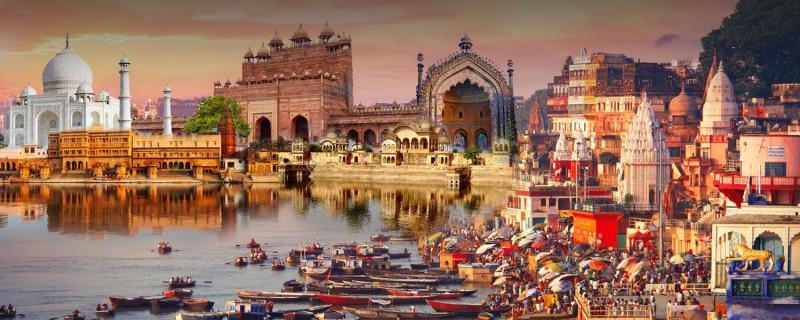
Lucknow Mahotsav - © gather
Weather in Lucknow: Best Time to Visit
Lucknow experiences a humid subtropical climate, characterized by hot summers, mild winters, and a monsoon season.
Average Temperatures
- Summer (April to June): Temperatures can soar between 30°C to 45°C (86°F to 113°F), making it quite hot.
- Monsoon (July to September): Average temperatures range from 25°C to 35°C (77°F to 95°F), with increased humidity and rainfall.
- Winter (November to February): The temperature drops to around 5°C to 20°C (41°F to 68°F), providing a pleasant climate.
Rainfall
Lucknow receives significant rainfall during the monsoon season, particularly in July and August, with an average annual rainfall of about 1000 mm. The city experiences moderate to heavy rain, which can lead to occasional flooding.
Best Time to Travel
The ideal time to visit Lucknow is from October to March when the weather is cooler and more comfortable for outdoor exploration. This period coincides with various festivals and cultural events, enhancing the travel experience.

Hazratganj Market, Lucknow - © gather
Culture Etiquette in Lucknow
Greeting Etiquette
In Lucknow, greetings are often accompanied by the courteous gesture of "adaab," where one makes a slight bow while placing a hand on the heart. This practice reflects the city's deep-rooted emphasis on respect and politeness. It's common to greet others with "Adaab" or "Salam," particularly in traditional settings.
Politeness and Respect
Lucknow is renowned for its "tehzeeb," or refined manners. Engaging in polite conversation and using respectful language are highly valued in the local culture. Phrases like "Pehle Aap" (After you) embody the chivalrous attitude of prioritizing others' comfort and preferences, making politeness a key aspect of daily interactions.
Dining Etiquette
When dining in Lucknow, it is customary to wait for the host’s invitation before starting to eat. Accepting offered food is considered polite, as refusing may be viewed as disrespectful. Traditional meals are often eaten with the hands, and it's advisable to use the right hand for eating, as the left hand is considered unclean.
Dress Code
While Lucknow is relatively liberal, modest dressing is appreciated, especially when visiting religious sites or conservative areas. During the hot months, light and breathable clothing is recommended, while warmer attire is necessary in winter to stay comfortable.
Observing Local Customs
Engaging with local festivals and customs offers a meaningful way to connect with the culture. Festivals like Eid, Diwali, and Holi are celebrated with great enthusiasm, and visitors are often welcomed to join in. Showing interest in and respect for local traditions can greatly enhance interactions with the community.
Photography and Privacy
Before taking photographs of people, especially in rural areas or during religious ceremonies, it's important to ask for permission. Respecting privacy is crucial, and being mindful of local sentiments when taking photos fosters goodwill and respectful relationships.
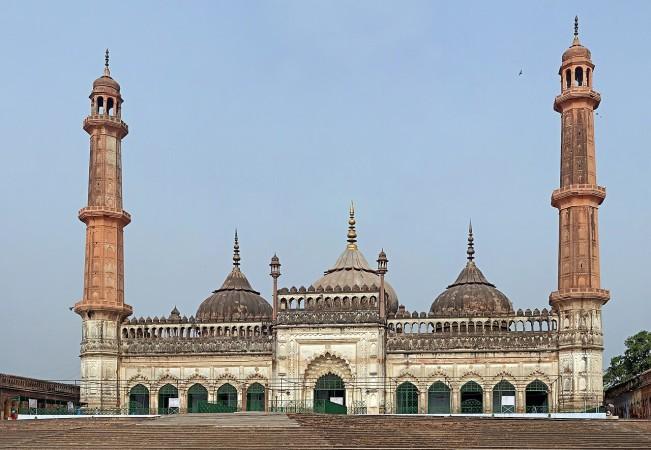
Asfi Mosque - © gather
Essential Travel Information
Getting to Lucknow
Airport
- Chaudhary Charan Singh International Airport (LKO) serves as the main airport, providing connections to major Indian cities and international destinations. It is approximately 14 km from the city center.
Transportation Options from the Airport
- Taxis: Pre-paid taxi services are available at the airport, with fares starting around ₹200 to the city center. Booking through services like GoIbibo or Chiku Cab can ensure a hassle-free experience.
- App-Based Cabs: Services like Uber and OLA operate from designated pick-up points at the airport, providing convenient options for travelers.
- Buses: There are also public buses that connect the airport to various parts of the city, though they may not be the most convenient for travelers with luggage.
Getting Around Lucknow
Public Transit
- Buses: Lucknow has an extensive bus network with over 35 routes. Fares start at just ₹15, making it an economical option for getting around.
- Metro: The Lucknow Metro is another efficient way to travel within the city, with various lines connecting key areas.
Taxis and Auto-Rickshaws
- Taxis: Taxis are widely available throughout the city, with a starting fare of around ₹55 and additional charges per kilometer. Visitors can hire taxis for short trips or full-day rentals.
- Auto-Rickshaws: These are a common and affordable mode of transport for short distances. Always negotiate the fare beforehand or ensure the meter is used.
Ride-Sharing Services
- App-Based Services: As mentioned, Uber and OLA are popular choices for convenient and reliable transportation. They can be booked easily via mobile apps and are often more comfortable than traditional taxis.
Car Rentals
- Visitors can also rent cars with a local driver for a more personalized experience, with costs starting around ₹1,700 for an eight-hour rental.
Banking Services and ATMs
Lucknow is well-equipped with banking services, including numerous ATMs from major banks. Here are some notable options:
State Bank of India ATM
- Address: N.B.R.I Branch, Ram Mohan Rai Marg, Lucknow, Uttar Pradesh 226001
- Phone: +91 1800 11 2211
- Hours: Open 24 hours
Axis Bank ATM
- Address: Khasra No 826/2 5A 827/3, Alambagh, Lucknow, Uttar Pradesh 226005
- Phone: +91 1860 500 5555
- Hours: Open 24 hours
HDFC Bank ATM
- Address: No 4, BN Road, Kaiserbagh Officer's Colony, Qaisar Bagh, Lucknow, Uttar Pradesh 226001
- Phone: +91 94267 92009
- Hours: Open 24 hours
Axis Bank ATM
- Address: No 153, 2, Alambagh Marg, Patel Nagar, Chander Nagar, Alambagh, Lucknow, Uttar Pradesh 226005
- Phone: +91 1860 500 5555
- Hours: Open 24 hours
These ATMs are widely accessible, ensuring that visitors can easily withdraw cash as needed.
Accommodation Choices
Lucknow offers a range of accommodation options to suit various budgets and preferences:
Luxury Hotels
- Taj Mahal Lucknow: A five-star hotel known for its luxurious amenities and excellent service, located near the city center.
- Renaissance Lucknow Hotel: Offers modern facilities and is situated close to key attractions.
Mid-Range Hotels
- Hotel Clarks Avadh: A well-known hotel that combines comfort with convenience, located in the heart of the city.
- The Grand JBR: Offers a blend of luxury and affordability with good dining options.
Budget Hotels
- Hotel Surya: A budget-friendly option that provides basic amenities and is located near the railway station.
- Hotel Sagar International: Offers comfortable rooms at reasonable rates, making it a popular choice among travelers.
Homestays and Guesthouses
Homestays: Visitors can also find homestays and guesthouses that provide a more personalized experience, often including meals and local insights.
Articles for you

Explore Yala National Park - Sri Lanka Travel, Asia
Tucked away in Sri Lanka’s southeastern corner, Yala National Park is where wild nature meets deep tradition. Known worldwide for its leopard population, the park is also home to elephants, sloth bears, crocodiles, and hundreds of bird species. Beyond wildlife, Yala opens doors to a cultural landscape dotted with ancient temples, Buddhist ruins, and coastal villages. For travelers seeking more than just a safari, Yala offers a chance to explore eco-tourism, local communities, and sacred heritage sites.
Population: The Yala National Park area doesn’t have a human population.
Economy: The economy around Yala National Park thrives on a blend of eco-tourism, agriculture, and local services. Safari tours, eco-lodges, and cultural experiences drive steady income for nearby towns like Tissamaharama and Kataragama, supporting thousands of families.
Landmarks: Famous for Block I of Yala and wildlife encounters, including elephants, sloth bears, crocodiles, and exotic bird species.

Explore Galle - Sri Lanka Travel, Asia
Nestled on Sri Lanka’s southern coastline, Galle is a vibrant city where history meets the sea. Its cobbled streets, colonial architecture, and serene beaches make it a must-visit destination for travelers seeking a blend of culture, adventure, and relaxation. A UNESCO World Heritage site, Galle captivates visitors with its Dutch Fort, bustling markets, and friendly locals. Whether you’re exploring the ramparts at sunset or savoring fresh seafood by the shore, Galle promises an unforgettable journey into Sri Lanka’s heritage.
Population: Approximately 113,000 in 2023.
Economy: Galle’s economy thrives on tourism, trade, and fisheries. The city’s historic fort, colonial architecture, and coastal charm draw thousands of international visitors each year, making tourism its main economic driver. Fishing remains vital for local livelihoods, supplying fresh seafood across the region.
Landmarks: Famous for the Galle Fort, Dutch Reformed Church & Maritime Museum, and Unawatuna Beach.

Explore Bentota - Sri Lanka Travel, Asia
Nestled along Sri Lanka’s southwestern coast, Bentota is a tropical paradise that blends golden beaches, vibrant culture, and thrilling adventures. Famous for its calm waters, luxury resorts, and scenic river estuary, Bentota has become a top destination for travelers seeking both relaxation and authentic experiences. From serene beach walks at sunrise to adrenaline-pumping water sports, this coastal town offers a perfect balance of leisure and exploration. With its proximity to Colombo and Galle, Bentota is easy to reach, making it an ideal stop for both short escapes and extended holidays.
Population: Approximately 37,000 in 2023.
Economy: Bentota’s economy thrives mainly on tourism, which drives local businesses such as hotels, restaurants, and wellness retreats. The town also benefits from fishing, coconut cultivation, and handicrafts like wood carving and batik textiles. Many residents rely on the growing demand for water sports and Ayurvedic treatments, making tourism the backbone of both income and employment in the area.
Landmarks: Famous for Bentota Beach, Bentota River Safari, and Kande Vihara Temple.

Explore Mirissa - Sri Lanka Travel, Asia
Mirissa is a charming coastal town on Sri Lanka’s southern shoreline. Known for its golden beaches, turquoise waters, and vibrant marine life, it has become a must-visit stop for travelers exploring the island. Many come for whale watching, surfing, and sunset views at Coconut Tree Hill, but Mirissa offers much more than postcard beauty. The fishing boats you see anchored by the bay carry generations of stories. Local traditions, delicious cuisine, and a laid-back rhythm of life shape every visitor’s experience.
Population: Approximately 4,700 in 2023.
Economy: Mirissa’s economy is largely shaped by its coastal location. Fishing has long been the backbone of local livelihoods, with generations relying on the Indian Ocean for income. In recent decades, tourism has become the main driver of growth, thanks to whale watching, surfing, and beachside hospitality.
Landmarks: Famous for Mirissa Beach, Coconut Tree Hill, and Parrot Rock Bridge.

Explore Nuwara Eliya - Sri Lanka Travel, Asia
Tucked away in the Central Highlands of Sri Lanka, Nuwara Eliya is often called “Little England”. With its rolling tea plantations, cool misty mornings, and colonial charm, this mountain town feels like a step into another world. Travelers come here to breathe fresh air, walk through flower gardens, sip the finest Ceylon Tea, and enjoy a pace of life far from the island’s busy cities. Whether you’re drawn by scenic landscapes, heritage architecture, or the warmth of its people, Nuwara Eliya is a destination that blends nature, culture, and history in perfect harmony.
Population: Approximately 781,000 in 2023.
Economy: Nuwara Eliya’s economy thrives mainly on tea production, as it sits in the heart of Sri Lanka’s central highlands, famous worldwide for Ceylon Tea. The city also benefits from a growing tourism industry, attracting visitors with its colonial charm, cool climate, and scenic landscapes.
Landmarks: Famous for Gregory Lake, Hakgala Botanical Garden, and Victoria Park.

Explore Sukau - Malaysia Travel, Asia
Nestled on the banks of the Kinabatangan River in Sabah, Malaysian Borneo, Sukau is a destination where wildlife, culture, and conservation come together. Known as one of Asia’s top spots for river safaris and eco-tourism, this quiet village offers a front-row seat to encounters with Bornean orangutans, pygmy elephants, proboscis monkeys, and exotic birdlife.
Population: Approximately 1,400 in 2019.
Economy: Sukau’s economy is shaped by its riverine location and natural resources. Traditionally, the Orang Sungai community relied on fishing, small-scale farming, and forest gathering for their livelihood. Today, the village has shifted toward eco-tourism, with river cruises, jungle trekking, and homestays providing income.
Landmarks: Famous for the Kinabatangan River cruises, Gomantong Caves, and Ox-bow lakes and wetlands.
